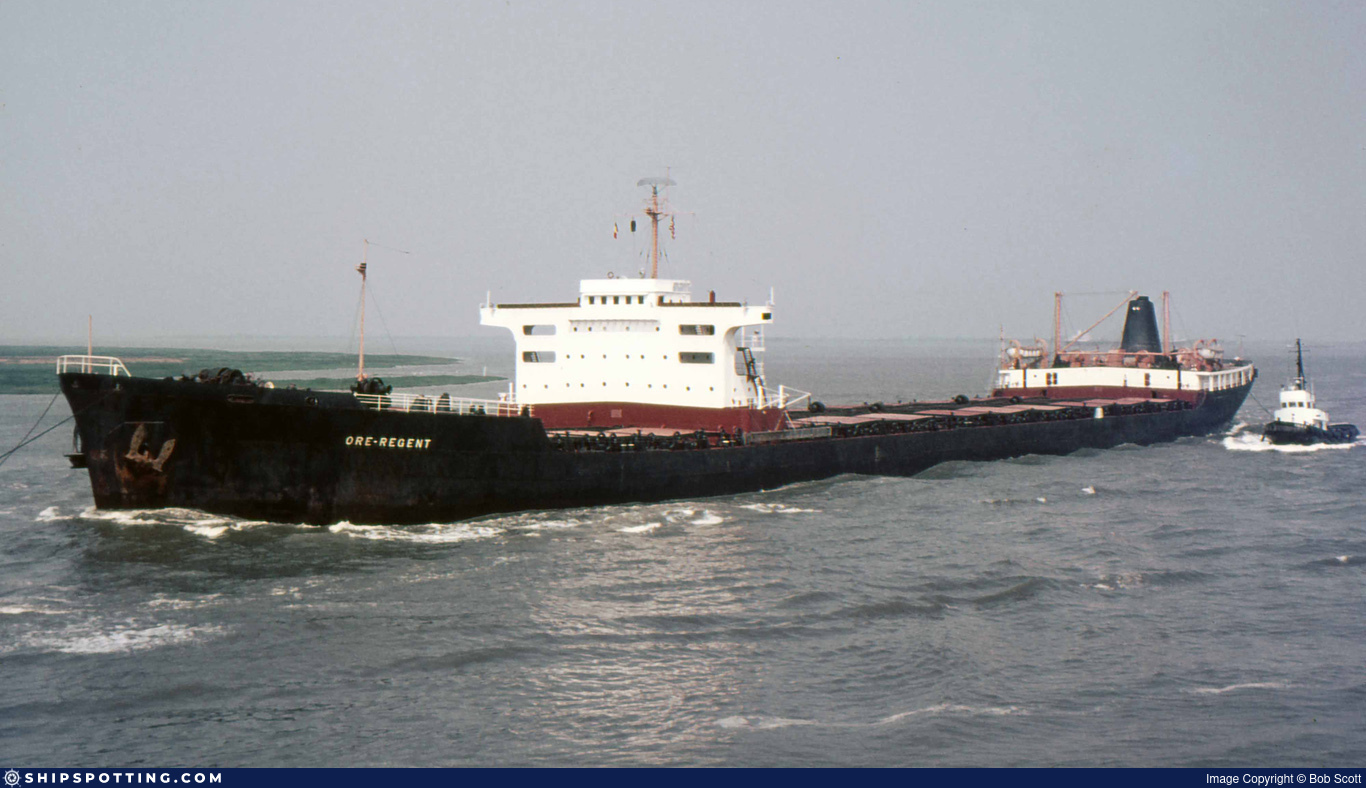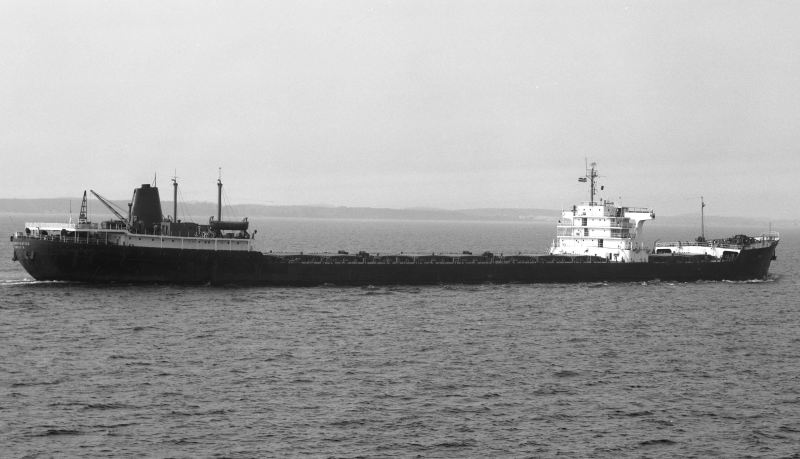
WELCOME TO SHIPSPOTTING.COM
ORE REGENT - IMO 5264405
Photo
details
Description:
15,655 grt; 45,379 dwt.
Operator: Universe Tankships Inc, Monrovia, a subsidiary of National Bulk Carriers Inc (D K Ludwig), New York.
Built: 1956 by National Bulk Carriers Inc, Kure, Japan. Yard no: 49.
This former Japanese Navy yard was bought by National Bulk Carriers. It subsequently became the Kure yard of Ishikawajima-Harima Heavy Industries (IHI).
Propulsion: two Westinghouse steam turbines of 17,600 shp (total). Speed: 15 knots.
1969-converted to bulk carrier of 30,316 grt/48,306 dwt.
1974-sold to Sea Navigation Inc, Monrovia, renamed SEA NAVIGATOR (Liberia flag).
1979-to breakers at Kaohsiung, Taiwan 1/10.
Photo: River Scheldt, approaching Terneuzen 5/7/1968.
Vessel
particulars
Former name(s):
- Ore Regent (Until 1973 Jan)
AIS Position
of this ship
There is no AIS Position Data available for this ship!
Would you like to add AIS Coverage?

Photo
Categories
This ship exists in the following categories:
Ore Carriers - 2 photos
Photographers
of this ship
(2)
1 photos
1 photos





COMMENT THIS PHOTO(10)
Edit
comment
Edit
comment
From what you say of the accomodation, at least I was spared such austere surroundings!
Sailed on a few Japanese built ships, spartan yes, but never overly so.
But this sounds a truly depressing environment in which to spend up to 6 months of your life:
Are depressed seafarers "cheaper to run"? Wouldn't have thought so. False economy I'd say.
Edit
comment
Bob
Edit
comment
Edit
comment
Edit
comment
Those who condoned this, should hang their heads in shame.
Edit
comment
Edit
comment
Edit
comment
Edit
comment